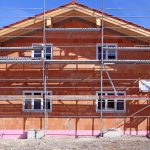VAT and property: a short technical introduction
So why is it exactly that VAT and property is such a difficult subject?
To answer that question, we have to go back to basic VAT principles. And there are two that are particularly important.
The VAT Liability of Property Transactions
First of all, you have to establish the VAT liability of the supplies concerned. Property transactions can be either taxable or exempt. More so than any other business sector, property transactions are subject to a multitude of different rules that define the liability of the transaction. These are based on various factors including the type of property, the intended use of the property and the nature of the transaction – eg freehold sale or lease. And those supplies which are taxable could either be at the standard rate of 15% (or 17.5% as appropriate), the reduced rate of 5% or the zero rate.
Recovery of VAT on costs and Partial Exemption
The next issue is to establish whether or not the business can recover VAT on its costs. Businesses which make exempt supplies normally can’t recover VAT on the related costs. This VAT is referred to as “exempt input tax”. This means that the exempt input tax becomes an additional cost to the business concerned. The VAT rules concerning such “partly exempt” businesses are very complicated.
So first the business has to establish the VAT liability of the intended supply and then it has to work out how much input tax it can or can’t recover.
The principles involved seem simple enough. But the rules themselves are several and complicated. And that’s why the subject is so difficuIt.
We’ve set out below just a few of the VAT issues that affect some of the different businesses in the property sector.
Development Companies and Investors
It normally takes years to plan a new property development, from the initial idea until the first time that the construction company even steps foot on the site. Development companies can incur significant costs, millions of pounds on large developments just getting to the stage of obtaining planning permission. And there is one specific VAT issue that affects the development companies: how to recover the VAT incurred on these costs.
The answer, of course, is to register for VAT and claim the VAT incurred on the VAT returns. But the company can only register for VAT if it makes taxable supplies or it can prove to HMRC that it will make taxable supplies in the future in the future. But this might only happen the company makes some form or management or consultancy services relating to the development concerned once the planning permission is obtained.
And once the registration is granted, the company can only recover VAT on services incurred in the six month period prior to registration. Any unrecovered VAT will be an unforeseen cost affecting budgeted costs. So the race is on to get the company registered as soon as possible.
Housebuilders and other non-commercial property developers
These are just a few of the important issues that affect the construction industry.
- VAT liability of new build and certification for certain types of residential and charitable
Buildings - Special rules for “builders’ materials”
- “Person constructing” status and partial exemption because of pre-sale lets
- VAT liability of conversion work and sales of converted buildings
Commercial Property Landlords
And of course, commercial property has it’s own major issue in the form of the “Option to Tax” and the anti-avoidance rules that affect even third party transactions, as well as the following other issues:
- VAT liability of “new” commercial buildings and civil engineering works
- VAT liability of “old” commercial property sales and leases
- Partial exemption including the “Capital Goods Scheme” and the “Payback/Clawback”
Provisions - Managing agents and treatment of VAT on clients’ property costs
It is vital to take VAT into account at all stages from the initial planning right through the implementation of any property development or transaction. We can help you right through the project to minimise VAT costs and ensure that the administration is properly managed.
